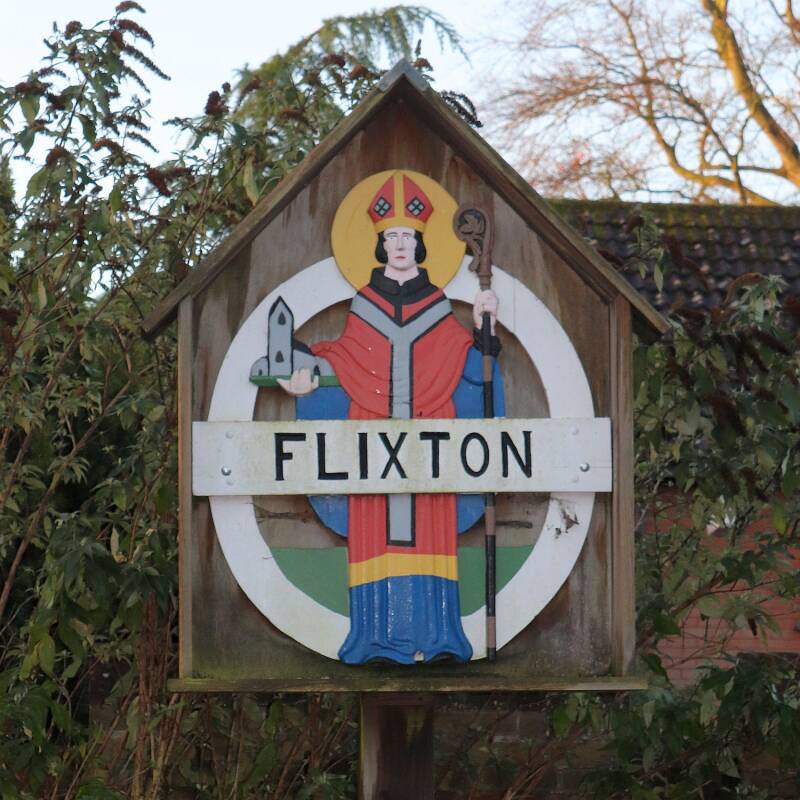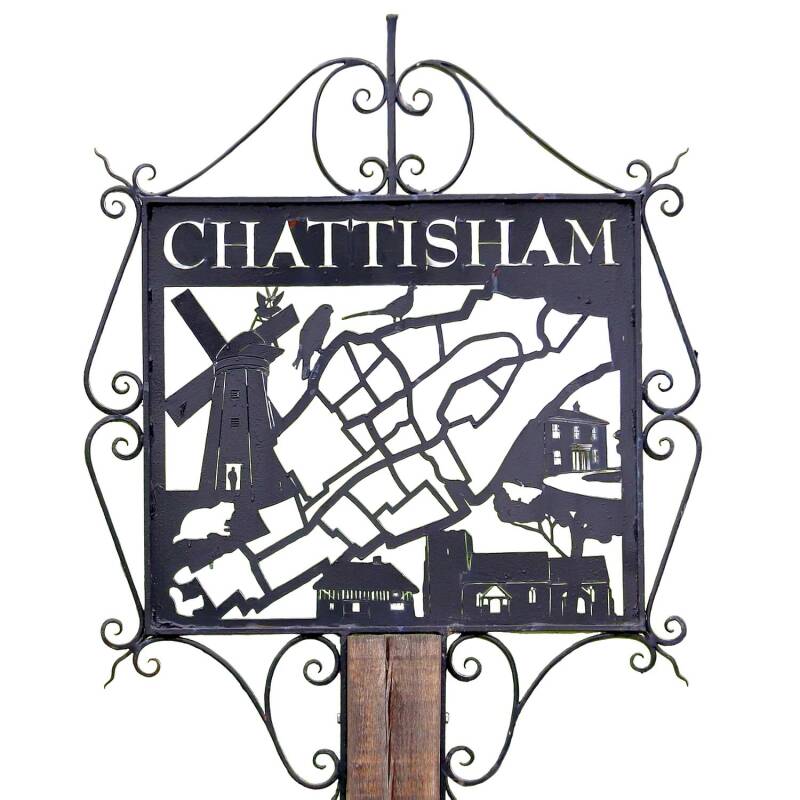Welcome to the Suffolk Village Signs Website
This site will contain all the information you will need to start your journey finding and cataloguing Suffolk Village Signs.



About village signs
It all started in the reign of King Edward VII when he was the Prince of Wales. He promoted signs for villages on the estate at Sandringham. King George V continued this trend and ordered further signs to be erected on the estate at Flitcham, Babingley, Shernborne and Wolferton and placed on top of directional signposts. This was in 1912 and they still stand today with many restorations but still bear the date; Wolferton is still positioned above the directional post, with the King's initials and the year 1912 when the sign was first erected.
Later, Prince Albert, Duke of York (later George VI) gave a speech to the Royal Academy in 1920 promoting the wider use of village signs. The Duke said "The development of motor travelling has brought back to our highways some of the importance which they enjoyed in the old coaching days. I feel sure that many of my comrade motorists would welcome the revival of the village sign or emblem to the visitor in a strange land. The name of many a village would offer scope for the wit and humour of the artist".
This then prompted the Daily Mail to run a competition throughout the country to design and build a village sign. The prize fund was very generous for the time at £2,100 which equates to just over £100,000 in purchasing power today. The winning schemes were exhibited at Australia House in London in October of 1920. A total of 525 entries were received, and 26 entries were shortlisted. The winner of the competition was St Peter's, second was Mayfield and third was Battle with six runners up.
There was a great mushrooming of village signs in the years 1977 when the Queen celebrated her Silver Jubilee, 2000 for the Millenium, 2002 which marked the Golden Jubilee and 2022, the Platinum Jubilee. The royal interest in village signs was shown when the Queen Mother and the Queen unveiled signs at Hillington, Norfolk in 1996 and Stowmarket, Suffolk in 2002 respectively.
Village signs are nearly always a community affair, with a local group being formed to decide on the design, to raise funds, and arrange the placement. Local groups such as the Women's Institutes, Rotary and Lions are sometimes involved. These signs are used as the local icon when they are sometimes seen in the press or on television to mark the location of the news being reported. At least one village sign had its name temporarily changed for a fictitious location in a television drama series. There was even a special sign made for Ambridge in the long-running radio programme, the Archers.
Village signs are made in a variety of materials. The earliest were made in wood, but nowadays other materials such as metal, ceramic, stone, fibreglass and polyurethane are used. Sadly, some village signs do not weather well or become neglected, but these sometimes get replaced by either an exact design replica in a more durable material, or by a different design perhaps still using motifs similar to those on the original sign. Thankfully many signs are still held in affection by the villages that set them up and are lovingly maintained.
It is hoped that the village signs from Suffolk will whet your appetite for exploration and discoveries of your own. May your journeys in Suffolk be full of the joys of discovering the fascinating details of local life and rich historical heritage depicted in the many and varied village signs with which our county is blessed.

Oldest sign in Suffolk was originally erected in 1921

The newest sign in Suffolk erected in September 2025
There are over five thousand village signs throughout Britain with just over four hundred in Suffolk alone. This site aims to show as many village signs in the county as possible with a short description. Where I can find old signs or those that have disappeared, I will also show here. A few of the signs will have more detail where I can gather relevant and reliable information.
I only started looking at village signs in anger in 2019 and this was mainly in Norfolk, of which I have now completed the list I set out to cover. Suffolk then appealed to me to complete as well, of which I am done (as of 12/10/2024). Hopefully this site will inspire some of you to take on the quest. I have provided location details which anybody can freely download and use. I am very interested in the old signs that are no longer around and may have been re-sited elsewhere in the likes of village halls or churches. Please email me if you have interesting stories or details about new or old signs. This is a work in progress and more details will follow in time. You can also join the Village Sign Facebook page, which I administrate, to post any pictures and thoughts. Next stop will be a similar site for Norfolk Village Signs. My contact details can be found in the footer.
All the photographs were taken by me (Bob Mitchell), unless otherwise specified. Information contained on this site has been taken from many sources, including the following:
- The village sign itself
- Wikipedia
- Addy and Long Suffolk Sign Books 1-5
- Suffolk Place Names, Their Origins and Meanings by A.D. Mills
- University of Nottingham "Key to English Place Names"
- Relevant local councils and their websites
- Village Sign Society database and literature
- Geograph website
















